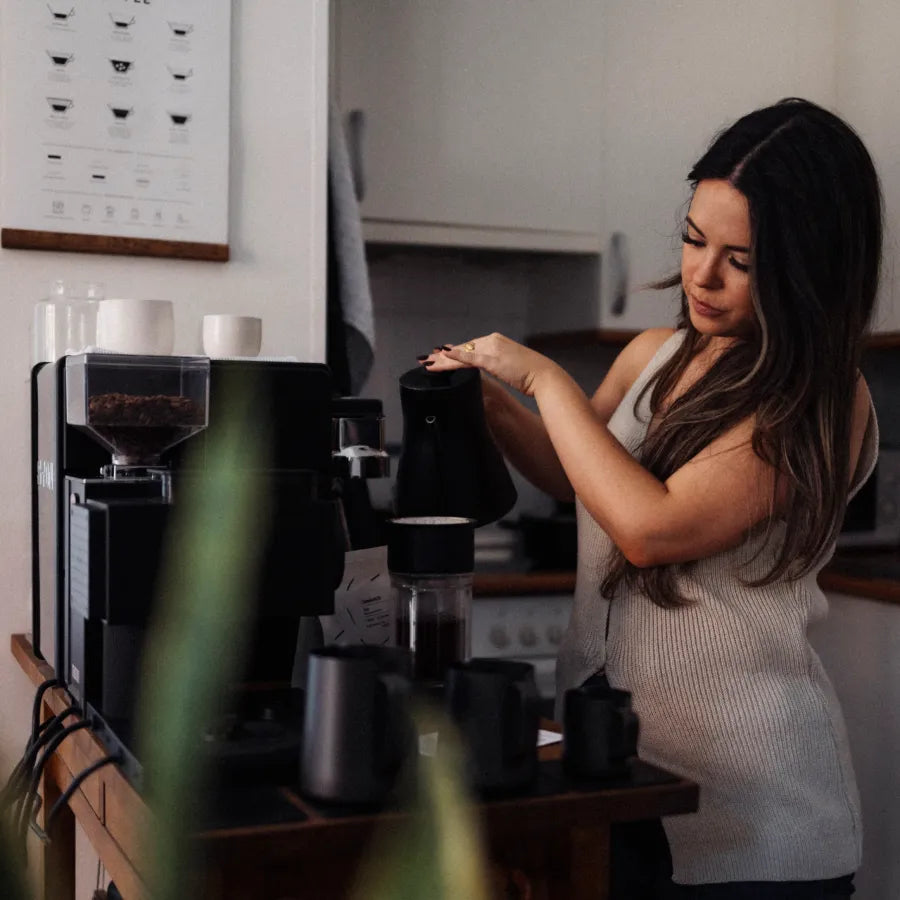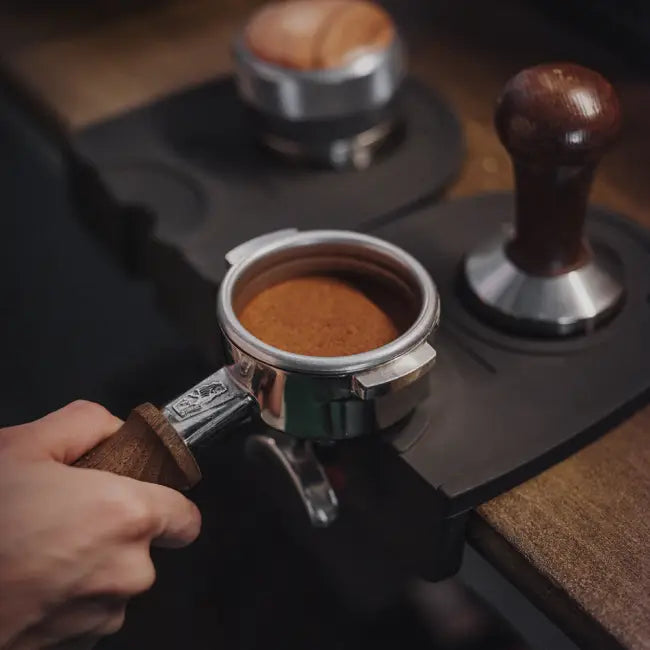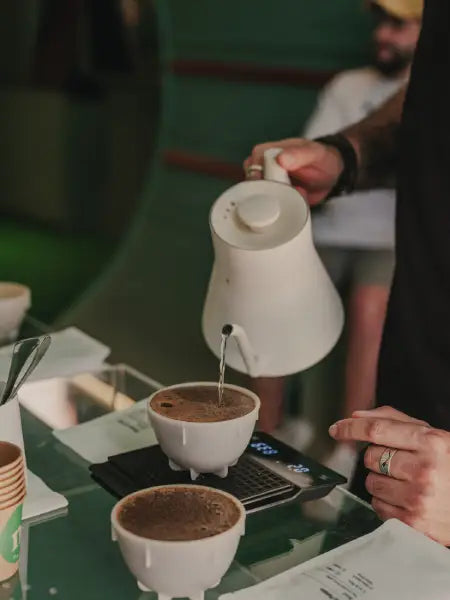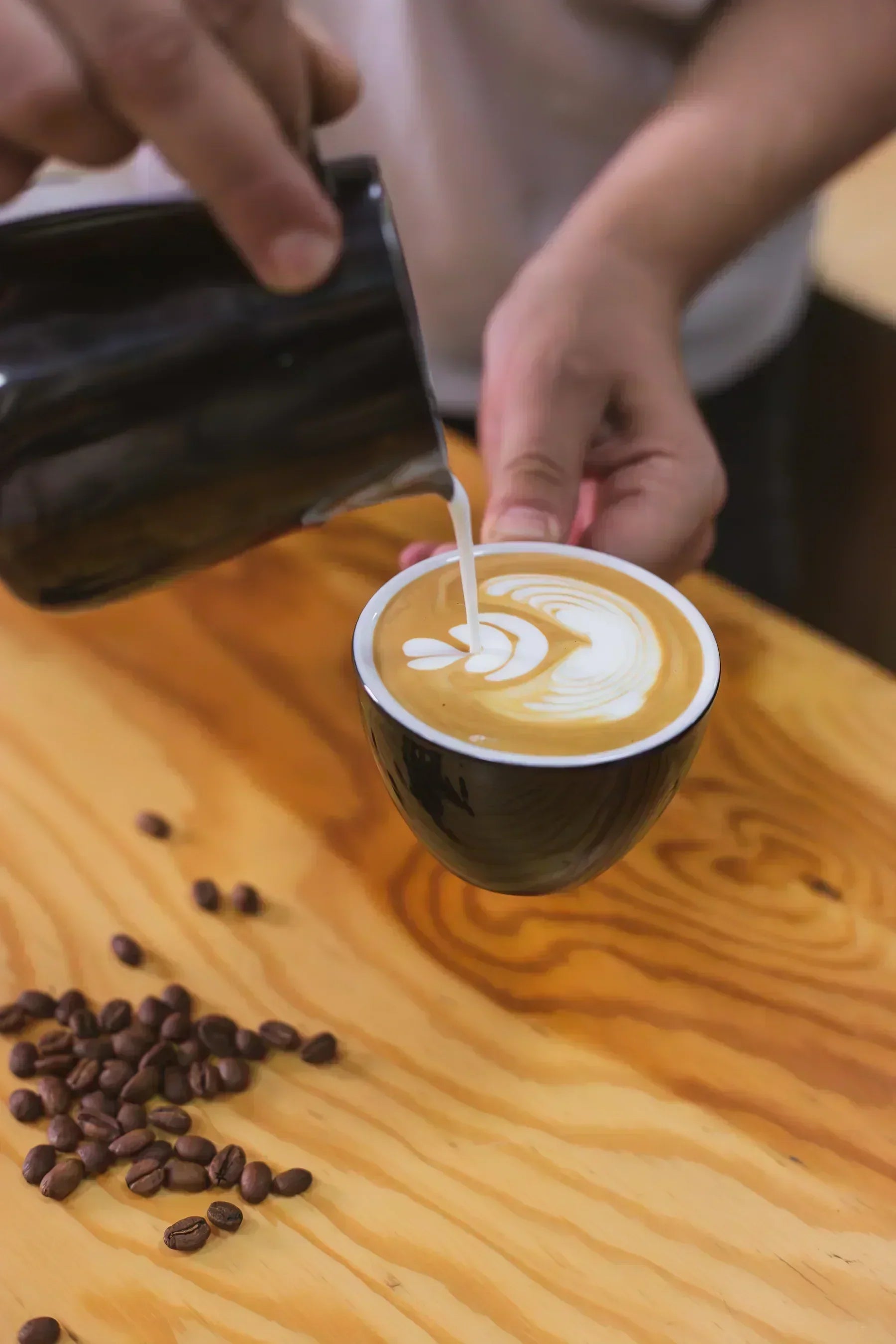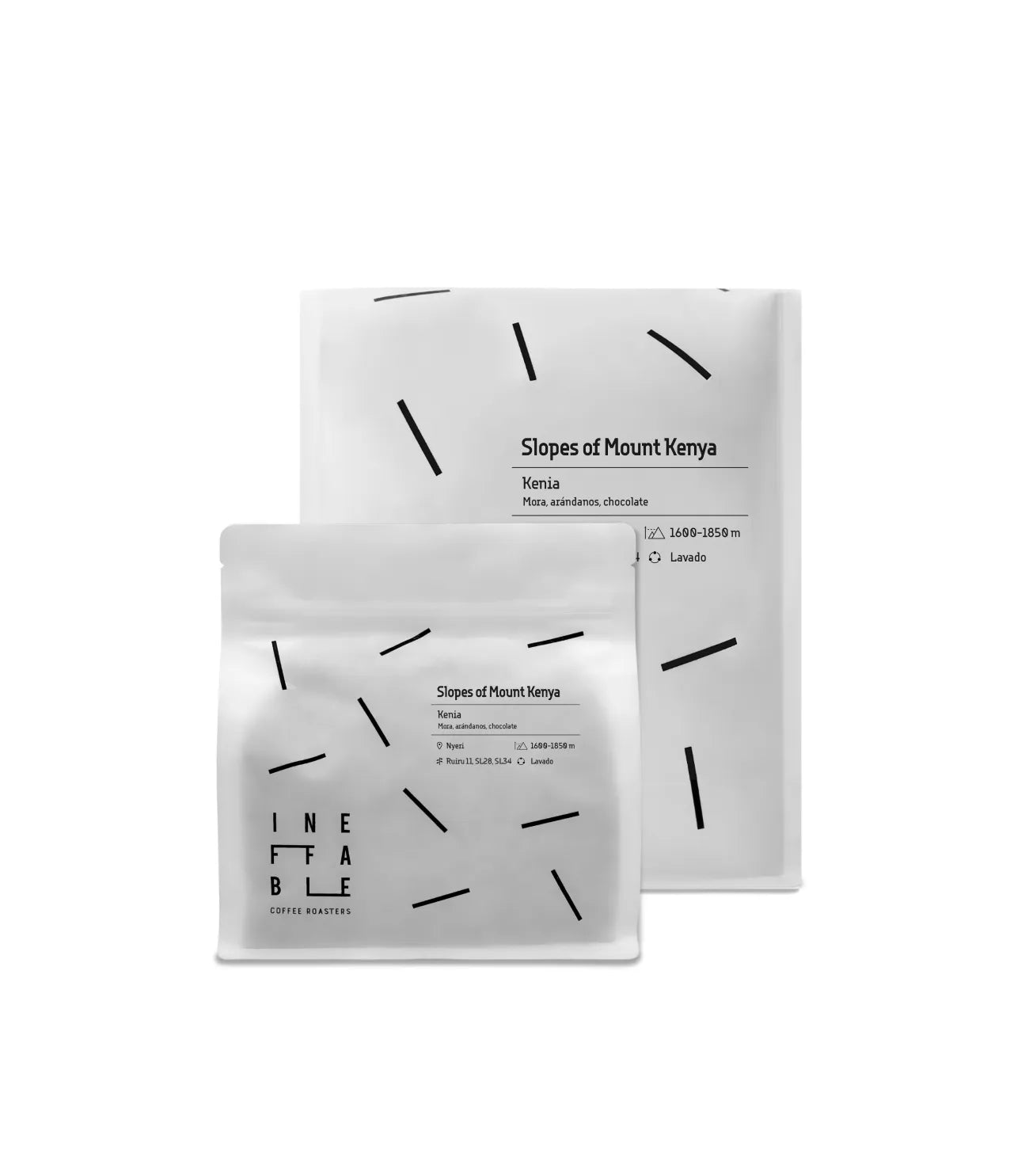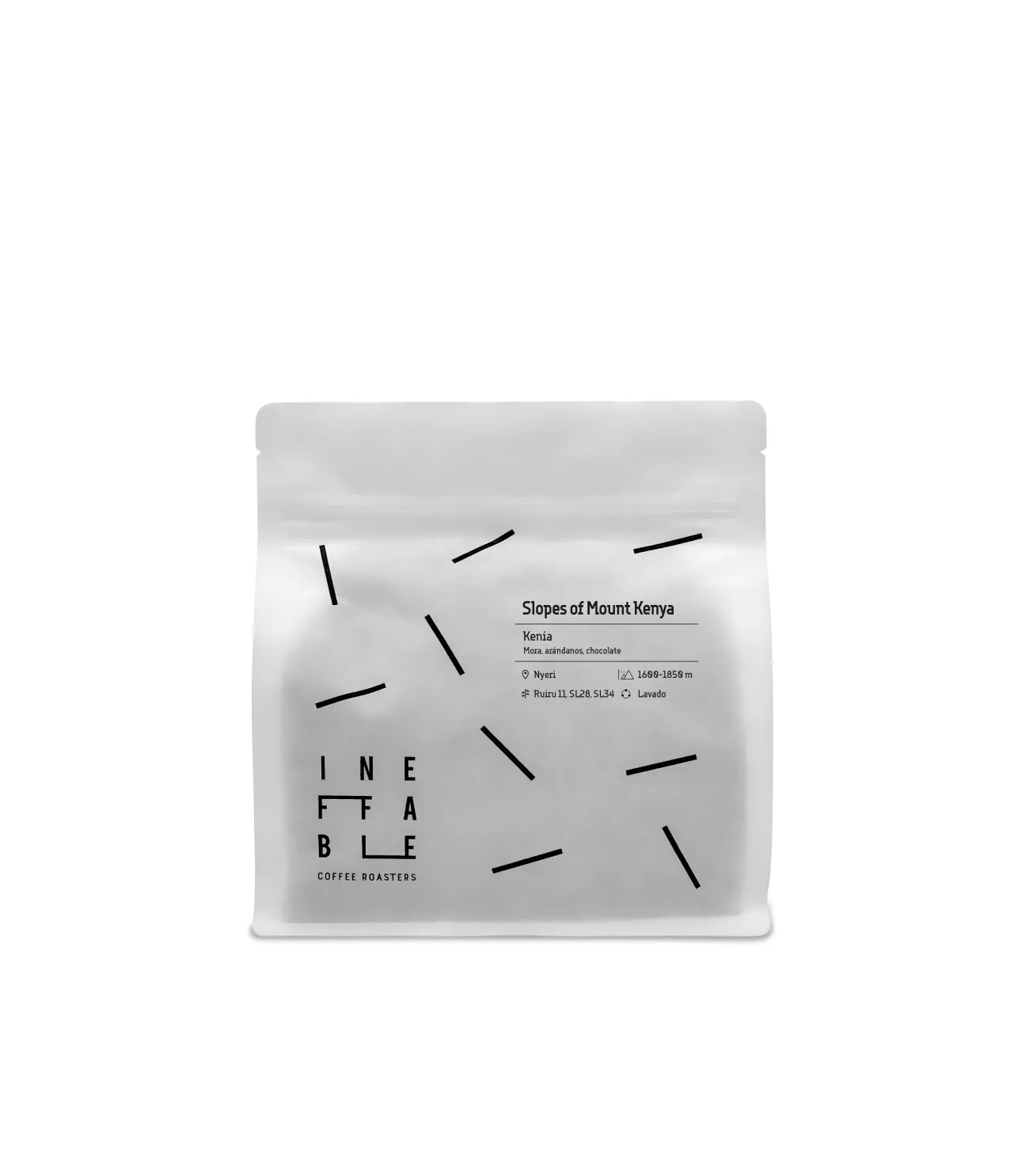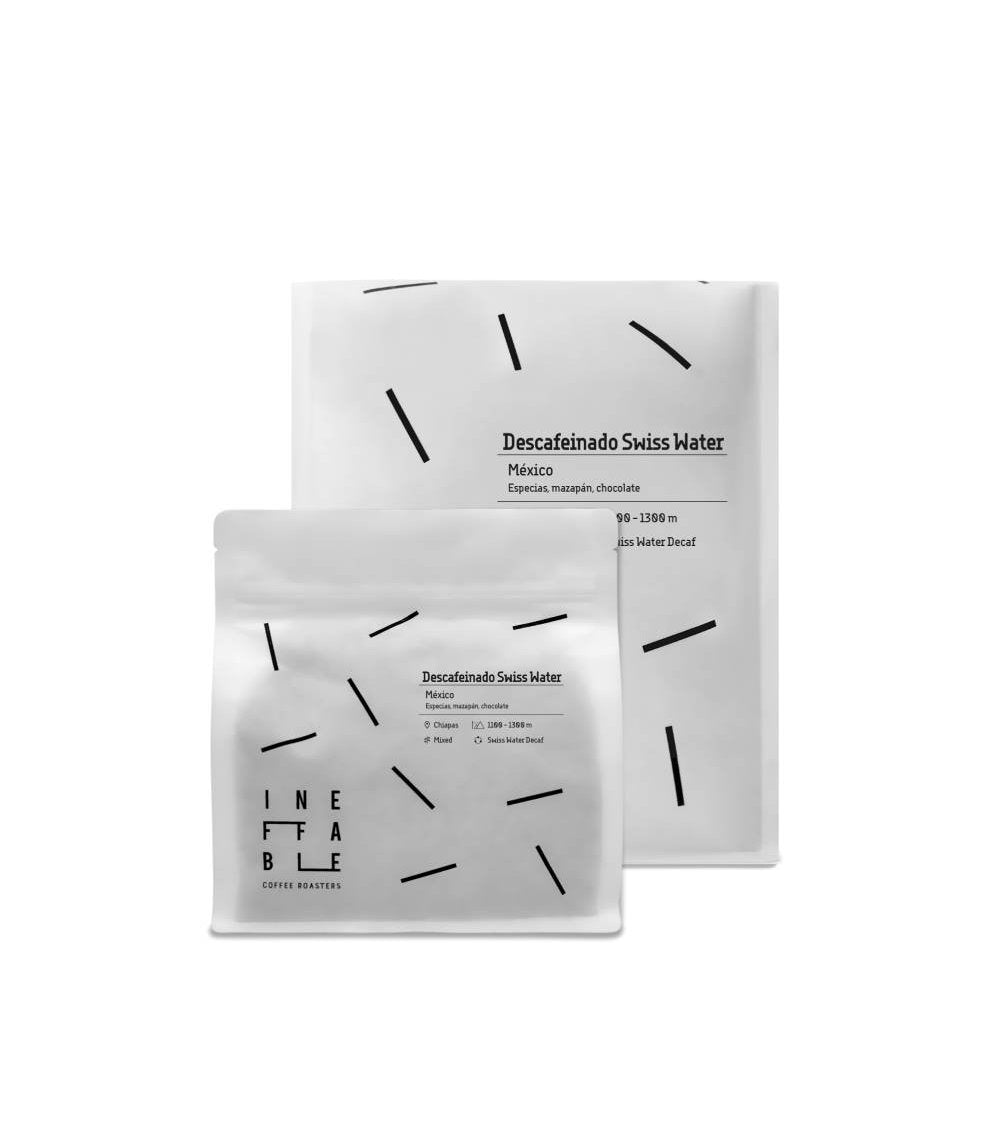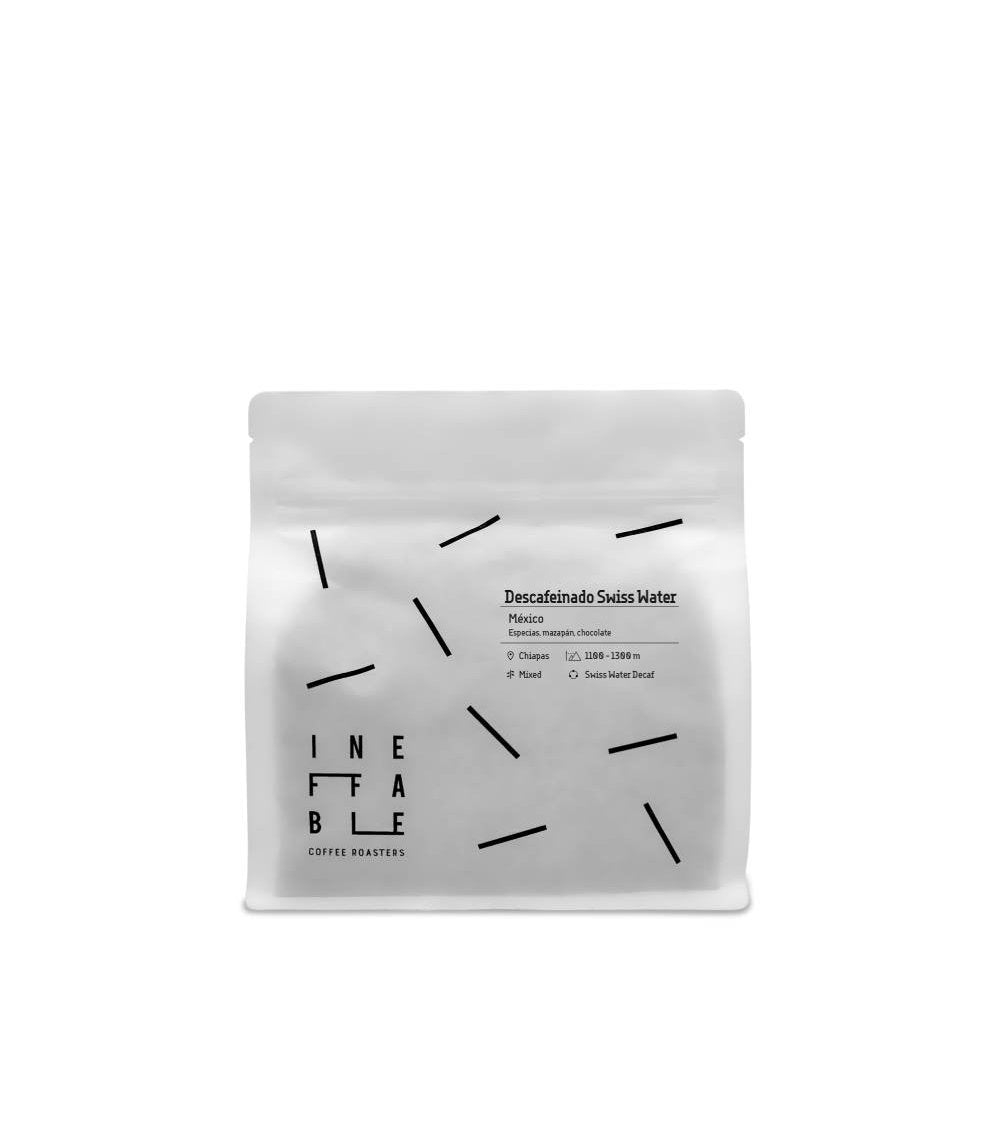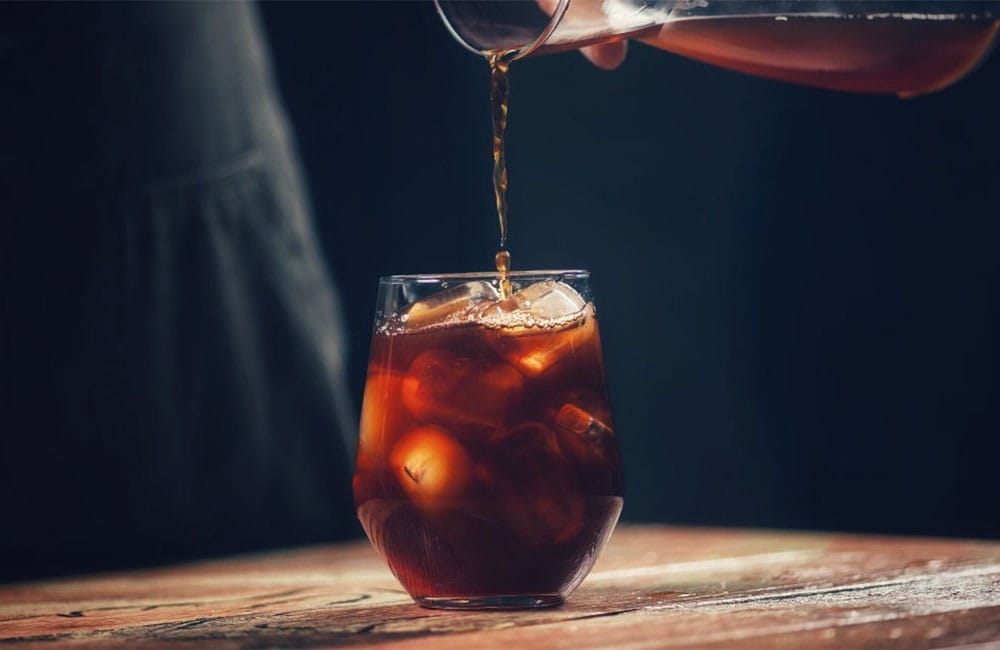¿Puede una nube de leche transformar un café fuerte en algo cremoso y reconfortante? El café latte lo consigue. Es uno de los favoritos en cafeterías de todo el mundo. Y con razón: es suave, equilibrado y perfecto para empezar el día con calma.
Historia y evolución del café latte
El café latte tiene raíces italianas, donde se conoce como caffè e latte. Pero su versión moderna, con arte en la espuma y servida en taza grande, nace en cafeterías de Australia, Nueva Zelanda, Estados Unidos y Europa.
Con el tiempo se ha convertido en un clásico del café moderno. Hoy es sinónimo de café largo con leche, perfecto para quienes buscan suavidad sin renunciar al sabor.
Preparación perfecta de café latte con leche espumada
Proporción espresso-leche
La receta básica es sencilla: una parte de espresso y dos o más partes de leche vaporizada. Se empieza con un espresso y se añade leche caliente con una textura sedosa. El equilibrio es lo que hace especial al café latte.

Texturizado con jarra
La leche debe calentarse sin hervir, hasta unos 65 ºC, y espumarla en una jarra para crear una microespuma fina. Esta textura es clave: suave, sin burbujas grandes, lista para verter con precisión sobre el café.
Para un resultado perfecto, elige un café con buen cuerpo y dulzor natural como los disponibles en nuestra colección de café para espresso.
Técnicas de latte art en el café latte
Con una buena espuma, puedes crear dibujos sobre la superficie del café latte. Corazones, rosetas o tulipanes. Es un detalle visual que añade magia al ritual de la mañana. No hace falta ser barista profesional: con práctica y buena leche, es posible conseguirlo en casa.
Variantes internacionales del café latte
En Francia se conoce como café au lait. En Alemania, milchkaffee. En Estados Unidos, se toma con sabores como vainilla o caramelo. Pero la esencia es la misma: café con leche caliente, cremoso y reconfortante.
En el post ¿qué es el café con leche? sentamos las bases sobre espresso y bebidas con leche.
¿Te apetece preparar el tuyo en casa? Visita nuestra home page y encuentra el grano perfecto para crear un café latte que no tenga nada que envidiar al de tu cafetería favorita.
